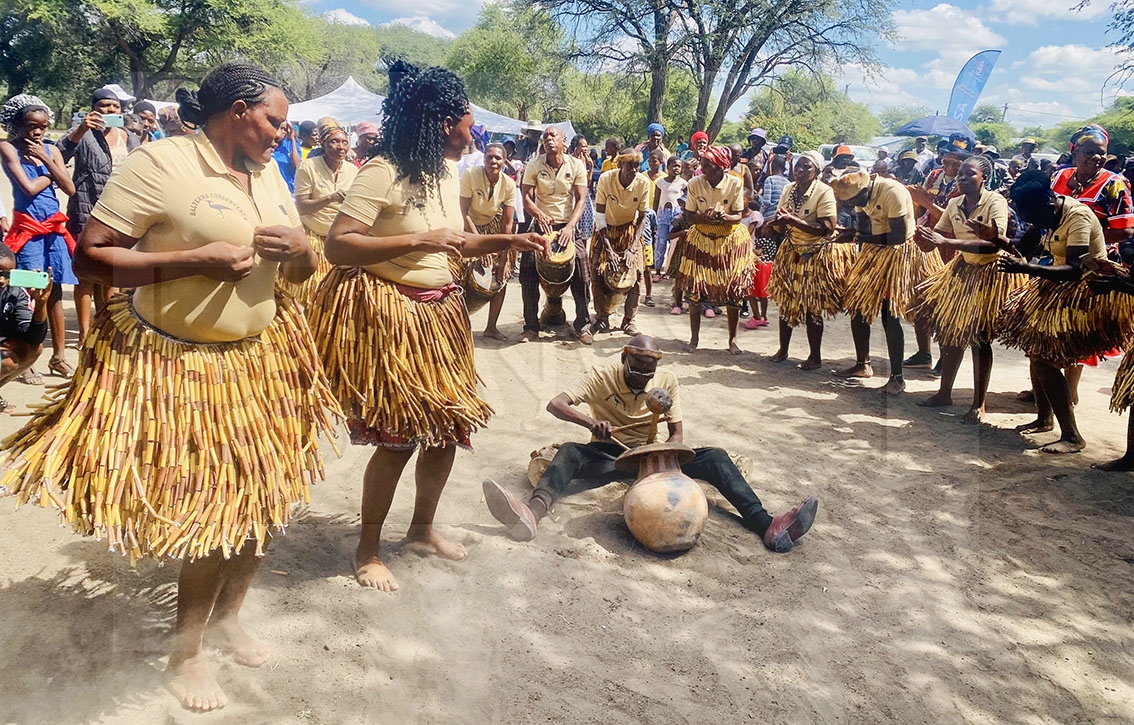Museum lives to its name
06 Feb 2019
As a harbinger of news, the innate drive and passion to tell a story becomes an obsession.
This is so, especially when you are in a new turf. You scamper around and itch to tell a story to the ever prying reader with a ravenous appetite for news.
After what felt like eternity conjuring up what to pen about Francistown and the periphery, the idea of Supa Ngwao Museum came to mind.
Founded in 1986 by Catrien Van Waarden, an Archeologist of repute, Supa Ngwao is a historical museum imbued with rich Kalanga story of the past and by extension, that of the North East district.
A peek at most of the exhibits on display at Supa Ngwao Museum, reveals the uniqueness of the facility.
Here you do not get to see stuffed animals as is the case with other museums, but as articulated by the board secretary, Saadia Rossenkhan, this does not take away from vast history the institution has to offer.
“The fact that ours is a unique museum should not be misinterpreted to mean we have nothing to offer, in fact, as a city of many firsts, Francistown has a lot of history than any other city in Botswana. It is in Francistown where mining activities and construction of railway lines first began,” she says giving remnants of Monarch mine as a case in point.
One such notable history as documented by Supa Ngwao is the naming and stature of the city, which has changed several times over the years.
Traditionally named Nyangabwe after the hill complex which towers over it, the township had its first name change in 1897.
It was christened Francistown after Daniel Francis, one of the founding directors of the Tati Concessions Limited, which owned virtually all the land of the settlement.
Post-independence era, Francistown was declared a township, before being declared the Botswana’s second city by the late Sir Ketumile Masire in 1997.
Also on display at the museum are black and white pictures of men from North Africa who formed part of a strong labour force that provided manual work during gold rush in South African mines.
These unskilled labourers, who came from as far as Rwanda, Congo and other such distant places in Africa used Francistown as a stop-over and in the process boosted the economy of the town a great deal.
“Those miners injected a lot of cash into local businesses making the then town abuzz with a lot of economic activity,” says Rossenkhan. Rapidly increasing economy continued until disaster struck.
A wrong fuel was put in on a South African bound aircraft at a hangar in Francistown carrying miners only for the plane to burst into flames midair and sent crashing, killing all its occupants, the majority of whom were natives from other African countries.
The incident did not only strain Botswana’s relations with affected African states. It literally squeezed the life out of a budding township that had a lot going at the time.
Aggrieved African member states that lost people during the dreadful incident devised alternative routes for their people to be airlifted ‘safely’ to and fro the South African mines, leaving Francistown and its businesses on the lurch.
Further perusal through some of the material on display at Supa Ngwao Museum, it becomes crystal clear that the town was a strategic imperative for Emperor Cecil John Rhodes’ uncompleted project to cross Africa from South to North by rail.
The plan, initiated at the end of the 19th century, during Western colonial rule, was an attempt to connect adjacent African possessions of the British Empire through a continuous line from Cape Town, South Africa to Cairo, Egypt.
Also of particular interest is how the famous Blue Jacket Street acquired its name, especially that the town has always been a purview of the people of Kalanga descent before entrance of groupings among them, Bapedi, Batswana, Amandebele and many others creating quite a cultural medley.
Blue Jacket Street, so reveals archived material at Supa Ngwao Museum derives its name from one of the Gold Prospectors of European extract who had a penchant for blue denim jackets.
It is recorded this man used to walk countless times down this particular dirt road before it was paved to subdue dust.
Over the years, this very important place of the history of Bakalanga and indeed the entire North East district has been lurching in a state of comatose; something that threatened the very cause for which it was established in the first place.
It seems the new board, elected into office by end of 2016, has truly hit the ground running and thus given Supa Ngwao Museum a new lease on life.
If the fire in Rossenkhan’s belly and company is anything to go by, the museum is surely set for even greater heights.
The Ambassadorial fund of well over P386 000 courtesy of the American Embassy channeled towards the construction of an archive room, which is the heartbeat of any given museum, has provided the much needed shot in the arm the facility needed the most.
Rossenkhan has also applauded government through the National Museum and Art Gallery, for having been Supa Ngwao strongest pillar in many ways than one.
“We have been able to hire three full time employees namely; Museum assistant, shop assistant as well as cleaner/gardner at the museum all of whom are paid for by government and government will extended the same courtesy to the museum curator we are about to recruit, once the archive room is up and running,’ she says. ENDS
Source : BOPA
Author : Mooketsi Mojalemotho
Location : FRANCISTOWN
Event : Feature
Date : 06 Feb 2019






